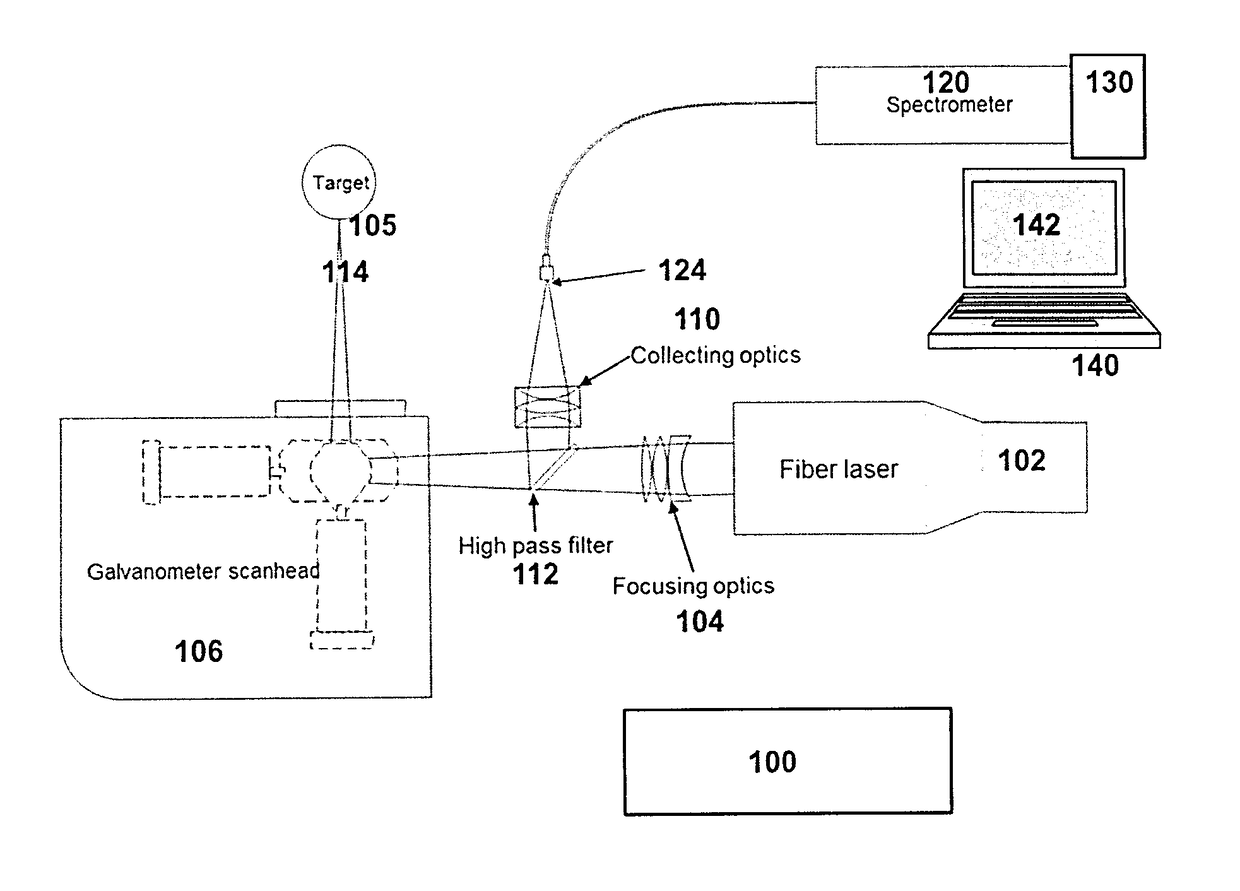Method and apparatus for fast quantitative analysis of a material by laser induced breakdown spectroscopy (LIBS)
a technology of laser induced breakdown and quantitative analysis, applied in the direction of material analysis, spectrum investigation, instruments, etc., can solve the problems of preventing one from realizing real-time analysis using libs, affecting the and difficult representation sampling of bulk materials, etc., to achieve the effect of improving the sensitivity and reproducibility of libs analysis
- Summary
- Abstract
- Description
- Claims
- Application Information
AI Technical Summary
Benefits of technology
Problems solved by technology
Method used
Image
Examples
Embodiment Construction
[0042]FIG. 1 shows a schematic overview of a LIBS apparatus 100 according to one embodiment of the present invention. The individual components shown in outline or designated by blocks in these figures are all well-known in the LIBS arts, and their specific construction and operation are not critical to the operation or best mode for carrying out the present invention. The apparatus 100 generally includes a pulsed fiber laser 102, a galvanometer 106, a high pass filter 112, a spectrometer 120 and a system computer 140. The apparatus 100 is configured to generate laser pulses from the fiber pulsed laser 102. The laser pulses are focused onto a sample 105 with a lens 104 to produce a plasma plume 114 of the sample 105. The galvanometer scan head 106 is electrically coupled with the system computer 140 for sending a displacement error signal to automatically correct positioning of the sample 105 during an ablating process as described further below. That galvanometer can be programmed ...
PUM
| Property | Measurement | Unit |
|---|---|---|
| wavelength | aaaaa | aaaaa |
| size | aaaaa | aaaaa |
| spot size | aaaaa | aaaaa |
Abstract
Description
Claims
Application Information
 Login to View More
Login to View More - R&D
- Intellectual Property
- Life Sciences
- Materials
- Tech Scout
- Unparalleled Data Quality
- Higher Quality Content
- 60% Fewer Hallucinations
Browse by: Latest US Patents, China's latest patents, Technical Efficacy Thesaurus, Application Domain, Technology Topic, Popular Technical Reports.
© 2025 PatSnap. All rights reserved.Legal|Privacy policy|Modern Slavery Act Transparency Statement|Sitemap|About US| Contact US: help@patsnap.com



